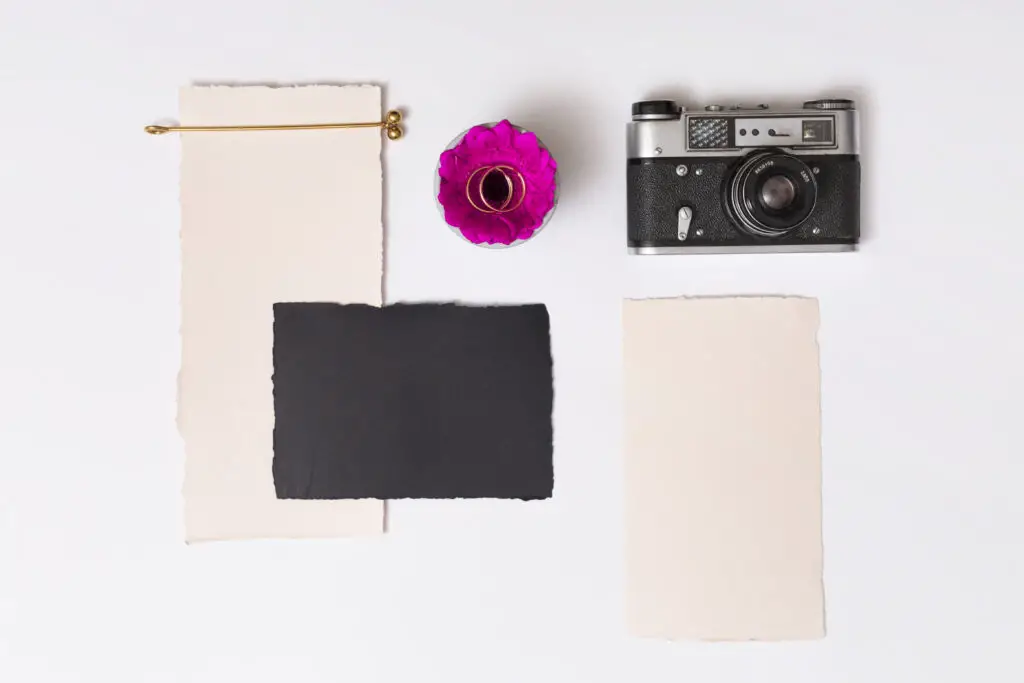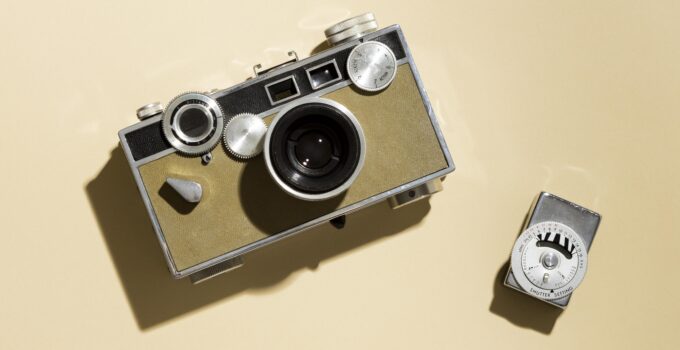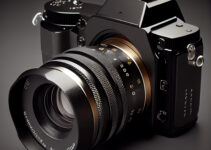Can you put a Polaroid camera in a checked bag?
If you’re planning a trip and want to capture those instant memories, you might be wondering about the safest way to travel with your beloved Polaroid camera. Ensuring its safety while adhering to airline regulations is crucial for a hassle-free journey.
Yes, you can put a Polaroid camera in a checked bag, but there are important considerations to keep in mind.
Polaroid cameras, especially vintage ones, can be delicate, and the film can be affected by X-ray scanners.
It’s recommended to pack them carefully and consider carrying film in your hand luggage.
Curious about the best practices for traveling with a Polaroid camera? We’ve got you covered.
Read on to learn expert tips from seasoned photographers and travel enthusiasts to ensure your camera and film stay safe during your travels.
Can you put a polaroid camera in a checked bag?
Yes, you can put a Polaroid camera in a checked bag, but it’s generally recommended to keep it in your carry-on.
Polaroid cameras and their film can be sensitive to X-ray scanners used for checked luggage, potentially causing damage or ruining the film.
Carrying the camera and film in your carry-on allows you to request a hand inspection at security, minimizing the risk of X-ray damage.
Here what is camera crossbody bag?
Additionally, keeping the camera in your carry-on ensures better protection against rough handling, theft, or loss that might occur with checked bags.
If you must pack it in checked luggage, ensure it’s well-padded to prevent physical damage.
Always check the specific airline’s regulations and the Transportation Security Administration (TSA) guidelines to stay informed about any changes or specific restrictions.
Can I take my INSTAX instant film through airport x-ray machines?
Yes, you can take INSTAX instant film through airport X-ray machines, but caution is needed. The X-ray scanners used for carry-on luggage at airport security checkpoints are generally safe for most film, including INSTAX instant film.
However, multiple exposures to X-rays can cause fogging or damage to the film. It’s advisable to request a hand inspection for your film to avoid any risk.

Avoid putting INSTAX film in checked luggage, as the X-ray machines used for checked baggage are much more powerful and can ruin the film.
Inform the security personnel that you have instant film and request a manual inspection.
This is a common request, and most security checkpoints are equipped to handle it. Always check the latest guidelines from the Transportation Security Administration (TSA) or your airport’s security to stay updated on any changes to these procedures.
Here what’s in my camera bag nikon?
Where to pack your polaroid camera while going through the airport security
When going through airport security, pack your Polaroid camera in your carry-on bag.
This approach minimizes the risk of damage from rough handling, theft, or loss, which can occur with checked luggage.
Additionally, keeping your Polaroid camera in your carry-on allows you to request a hand inspection for both the camera and its film, avoiding potential damage from X-ray scanners.
X-ray scanners used for carry-on luggage are less likely to harm your camera or film compared to those used for checked baggage.
Here, what is designer camera bag?
However, multiple exposures to X-rays can still pose a risk to instant film. By carrying your camera and film with you and requesting a manual inspection, you ensure their safety.
Always check the specific guidelines of the Transportation Security Administration (TSA) or your airport to be informed about the latest security procedures and regulations.
Polaroid Camera and film in carry-on
When traveling, pack your Polaroid camera and film in your carry-on bag. This approach provides better protection against damage, theft, or loss compared to checked luggage.
Additionally, carry-on X-ray scanners are generally safe for film, but repeated exposure can still cause fogging or damage.
To safeguard your film, request a hand inspection at the security checkpoint. Inform security personnel that you have instant film, and they will usually accommodate this request.
Hand inspections prevent any risk of X-ray damage, ensuring your film remains in optimal condition for use.
By keeping your Polaroid camera and film in your carry-on, you also maintain control over these valuable items, reducing the likelihood of any issues during your travels.
Always check the latest guidelines from the Transportation Security Administration (TSA) or your specific airport to stay informed about any changes or specific procedures.
Can polaroid film go in a checked bag?
Is a Polaroid camera allowed in flight?
Yes, a Polaroid camera is allowed in flight. You can bring it with you in your carry-on bag or personal item.

Bringing the camera in your carry-on ensures it is protected from damage, theft, or loss that can occur with checked baggage. It also allows you to keep it close and use it during the flight if you wish.
When going through airport security, inform the security personnel that you have a Polaroid camera and instant film.
Request a hand inspection for the film to prevent potential damage from X-ray scanners. Most airport security staff are familiar with this request and will accommodate it.
Always check the specific airline’s regulations and the Transportation Security Administration (TSA) guidelines to ensure you comply with any size or weight restrictions for carry-on items.
This way, you can travel with your Polaroid camera without any issues.
Can I put a film camera in checked luggage?
It’s not advisable to put a film camera in checked luggage. The powerful X-ray scanners used for checked baggage can damage or fog the film, potentially ruining your photos.
Additionally, checked luggage is more susceptible to rough handling, theft, and loss, which could damage your camera and its components.
Instead, pack your film camera in your carry-on bag.
This ensures better protection and allows you to request a hand inspection for the film at the security checkpoint, avoiding any risk from X-ray exposure. Security personnel are generally accommodating of such requests.
Carrying your film camera in your carry-on also keeps it accessible and safe throughout your journey.
Here, what’s in my travel camera bag?
Always check the latest guidelines from the Transportation Security Administration (TSA) and your specific airline to stay informed about any regulations regarding film and carry-on items.
This approach ensures your film camera remains in optimal condition while traveling.
Can instax go in checked luggage?
Instax film should not go in checked luggage. The powerful X-ray scanners used for screening checked baggage can damage or fog the film, ruining your photos.
Additionally, checked luggage is more prone to rough handling, theft, and loss, which can harm your Instax camera and film.
Instead, pack your Instax camera and film in your carry-on bag.
This provides better protection and allows you to request a hand inspection for the film at the security checkpoint, avoiding any risk from X-ray exposure. Security personnel are usually familiar with this request and will accommodate it.
By keeping your Instax camera and film in your carry-on, you ensure they remain safe, accessible, and in optimal condition throughout your journey.
Always check the latest guidelines from the Transportation Security Administration (TSA) and your specific airline to stay informed about any regulations regarding film and carry-on items.
What difficulties would occur if I tried to take my Instax camera on a plane?
Taking your Instax camera on a plane generally poses few difficulties, but there are some considerations to keep in mind.
The primary concern is protecting the instant film from X-ray scanners used at security checkpoints. While carry-on scanners are usually safe, repeated exposure can potentially damage the film. To mitigate this risk, request a hand inspection for your film.
Another issue might be the space and weight limitations of your carry-on luggage, especially if you’re traveling with multiple items.
Ensure your Instax camera and accessories are packed securely to avoid damage.
Additionally, be aware that security personnel might need to inspect the camera, which could take a few extra minutes during the security screening process.
Lastly, familiarize yourself with airline-specific regulations and the Transportation Security Administration (TSA) guidelines to ensure compliance and a smooth travel experience with your Instax camera.
Polaroid Film went through X-RAY at Airport (Is it safe)
A single pass through an X-ray scanner at airport security is generally safe for Polaroid film. These scanners are designed to use low doses of X-rays that won’t significantly affect photographic film.
However, multiple passes through the X-ray scanner or prolonged exposure can potentially lead to fogging or other damage to the film.
If your Polaroid film has only been through the X-ray scanner once, it should be fine for use.
However, if you’re concerned about potential damage or if the film has been through the scanner multiple times, it’s advisable to err on the side of caution.
Consider using the film for less critical shots or testing it with less important subjects before using it for important photos.
For future travels, consider requesting a hand inspection for your Polaroid film at the airport security checkpoint to avoid any potential risk from X-ray exposure.
Do X-rays effect on different films
Smart precautions from the film buffs
Film buffs can take several smart precautions to protect their film and equipment:
- Carry-On Baggage: Always carry your film and camera equipment in your carry-on bag to protect them from rough handling, theft, or loss. Checked baggage is more prone to damage.
- Hand Inspection: Request a hand inspection for your film at airport security checkpoints to avoid potential damage from X-ray scanners. Most security personnel are accommodating of this request.
- Film Storage: Store your film in a cool, dry place to maintain its quality. Avoid exposing it to extreme temperatures or humidity.
- Protective Cases: Use protective cases or sleeves for your film and camera equipment to prevent physical damage during travel.
- Backup Equipment: Consider carrying backup film and camera equipment in case of emergencies or technical issues.
- Research: Stay informed about airline regulations, TSA guidelines, and specific security procedures related to film and photography equipment to ensure a smooth travel experience.
By taking these precautions, film buffs can enjoy their passion for photography while safeguarding their equipment and film from potential risks during travel.
Can my Instax Polaroid camera and film be in my carryon luggage or my purse?
Yes, you can keep your Instax Polaroid camera and film in either your carry-on luggage or your purse while traveling.
Both options are suitable for ensuring the safety and accessibility of your camera and film during your journey.
Carry-on luggage provides more space and protection, allowing you to pack additional accessories and keep everything organized. However, ensure that your camera and film are well-padded to prevent damage from bumps or jostling.
On the other hand, keeping your Instax camera and film in your purse offers convenience and quick access during your trip.
It’s a great option if you prefer to have your camera easily accessible for capturing spontaneous moments.
Whichever option you choose, remember to request a hand inspection for your film at airport security checkpoints to minimize the risk of X-ray damage.
Additionally, be mindful of any size or weight restrictions for carry-on items imposed by your airline.
Off to the airport? Here’s how to protect your instant film (9 ways)
5 places to pack your polaroid camera bag traveling on a plane
1. Carry-On Baggage
Packing your Polaroid camera bag in your carry-on luggage is a smart choice when traveling on a plane.
This ensures that your camera is with you at all times, minimizing the risk of damage or loss that can occur with checked baggage.
Additionally, carrying your camera in your carry-on allows you to keep it accessible during the flight, making it easy to capture moments while on board or during layovers.
When placing your Polaroid camera bag in your carry-on, consider its size and weight to ensure it complies with airline regulations.
Use a padded camera bag or insert to protect your camera from bumps and shocks during transit.
Organize your camera accessories, such as extra film packs, batteries, and lens attachments, within the bag for easy access and efficient packing.
2. Personal Item
Another option is to pack your Polaroid camera bag as your personal item, in addition to your carry-on luggage.
Most airlines allow passengers to bring a small personal item such as a backpack, purse, or laptop bag on board.
Utilizing this space for your camera bag allows you to free up space in your carry-on for other essentials while keeping your camera close at hand.
Choose a camera bag that fits within the dimensions specified by the airline for personal items.
Ensure that the bag is comfortable to carry, especially if you plan to use it as your primary carry-on item during the flight.
Keep your camera and accessories organized within the bag to prevent damage and make retrieval easy during security checks or in-flight use.
3. Under the Seat
If you prefer to have quick access to your Polaroid camera during the flight, consider placing it under the seat in front of you.
This location keeps your camera within reach throughout the journey, allowing you to capture moments without having to retrieve it from overhead compartments.
When stowing your camera bag under the seat, ensure that it is securely placed to prevent shifting during takeoff, landing, or turbulence.
Use a compact camera bag that fits comfortably in the limited space under the seat without obstructing your legroom or causing discomfort to fellow passengers.
4. Overhead Bin
Placing your Polaroid camera bag in the overhead bin is a common practice when traveling on a plane. This allows you to store your camera safely overhead while keeping it easily accessible when needed.
Choose a camera bag that is durable and provides adequate protection for your camera and accessories during transit.
When using the overhead bin, be mindful of other passengers’ belongings and avoid overpacking the bin to ensure a secure fit for your camera bag.
Place your camera bag in a position that allows you to retrieve it without disturbing neighboring items or causing inconvenience to fellow travelers.
5. Seat Pocket
For quick and convenient access to your Polaroid camera during the flight, consider using the seat pocket in front of you. Most airplane seats feature a seatback pocket where you can store small items such as books, magazines, or electronic devices.
Utilizing this space for your camera bag keeps it within arm’s reach throughout the journey.
When placing your camera bag in the seat pocket, ensure that it is securely positioned to prevent it from slipping out or getting crushed during movement.
Choose a camera bag that fits comfortably within the dimensions of the seat pocket and does not protrude or obstruct legroom.
Overall, the best place to pack your Polaroid camera bag while traveling on a plane depends on your preferences for accessibility, protection, and convenience.
Consider these options and choose the one that suits your needs and travel style for a hassle-free and enjoyable journey with your camera.
Related faq’s
Will a Polaroid camera go through an airport scanner?
Yes, a Polaroid camera can go through an airport scanner. These scanners are generally safe for electronic devices, including cameras.
However, if you’re concerned about potential damage to the camera or its film, you can request a hand inspection at the security checkpoint.
Inform the security personnel that you have a Polaroid camera and explain that you prefer not to send it through the X-ray scanner. Most security checkpoints are equipped to accommodate such requests, and they will conduct a manual inspection of your camera without subjecting it to X-ray radiation.
Alternatively, you can remove the film from the camera before going through security to ensure it doesn’t get exposed to X-rays.
Always check the specific guidelines and procedures of the Transportation Security Administration (TSA) or your airport regarding electronic devices and security screenings to stay informed about any updates or requirements.
Will instax mini film damage in airport X-rays? I’m traveling very soon and I want to take my instax Polaroid film, I’m worried the film will be damaged by the X-rays.
Instax Mini film is generally safe to pass through airport X-ray scanners. These scanners use low levels of radiation, which do not typically damage instant film.
However, if you’re concerned about potential effects, you can request a hand inspection for your Instax film at the security checkpoint.
This minimizes any risk of X-ray exposure and ensures the film remains in optimal condition for your photographs.
Most security personnel are accommodating of such requests and will inspect the film manually without subjecting it to X-rays.
Can I take my Instax Mini through airport security (without film)? Will the x-rays ruin the camera itself?
It’s generally safe to take your Instax Mini camera through airport security without film.
The X-ray scanners used for carry-on luggage are designed to detect items without causing damage to electronic devices like cameras.
However, to be extra cautious, you can request a hand inspection for your camera at the security checkpoint.
This ensures that the camera is not subjected to X-ray radiation, minimizing any potential risk of damage.
Most security personnel are understanding of such requests and will inspect the camera manually without using X-ray scanners.
Can you put a Polaroid camera’s film through the X-ray machine at the airport?
Yes, you can put a Polaroid camera’s film through the X-ray machine at the airport. These machines typically use low levels of radiation that do not harm instant film.
However, if you’re concerned about potential damage, you can request a hand inspection for the film at the security checkpoint.
This minimizes any risk of X-ray exposure and ensures the film remains in optimal condition for capturing photos.
Most security personnel are understanding of such requests and will inspect the film manually without using X-ray scanners.
Can i put my polaroid camera in checked luggage?
It’s generally not recommended to put your Polaroid camera in checked luggage.
Checked baggage is subjected to more rigorous handling, temperature variations, and potential damage compared to carry-on luggage.
Cameras are delicate electronic devices that can be easily damaged or malfunction if mishandled during transit.
To ensure the safety of your Polaroid camera, it’s best to pack it in your carry-on bag where you can keep it with you and protect it from rough handling.
This also allows you to request a hand inspection for the camera at the security checkpoint to avoid potential damage from X-ray scanners.
Can you take a polaroid camera through airport security?
Yes, you can take a Polaroid camera through airport security. It’s recommended to pack it in your carry-on bag for better protection and accessibility.
Airport security is accustomed to screening electronic devices like cameras, and the X-ray scanners used for carry-on luggage are generally safe for such items.
However, if you’re concerned about potential damage, you can request a hand inspection for your Polaroid camera at the security checkpoint.
This minimizes any risk of X-ray exposure and ensures your camera remains in optimal condition for capturing memories during your travels.
Can you bring an instax mini 9 on a plane?
Yes, you can bring an Instax Mini 9 camera on a plane.
It’s best to pack it in your carry-on luggage for better protection and accessibility during your journey.
Airport security is familiar with screening electronic devices like cameras, and the X-ray scanners used for carry-on baggage are generally safe for such items.
However, if you’re concerned about potential damage, you can request a hand inspection for your Instax Mini 9 at the security checkpoint.
This minimizes any risk of X-ray exposure and ensures your camera remains in optimal condition for capturing memories while traveling.
Can instax film go through airport x ray?
Yes, Instax film can go through airport X-ray scanners. These scanners use low levels of radiation that are typically safe for instant film.
However, repeated exposure to X-rays can potentially affect the film’s quality over time, causing fogging or distortion.
To minimize any risk, you can request a hand inspection for your Instax film at the security checkpoint.
This avoids repeated X-ray exposure and ensures the film remains in optimal condition for capturing photos.
Most security personnel are accommodating of such requests and will inspect the film manually without subjecting it to X-ray radiation.
Does polaroid film get ruined in airport security?
Polaroid film typically doesn’t get ruined in airport security.
The X-ray scanners used for carry-on luggage are generally safe for instant film, and a single pass through these scanners is unlikely to cause damage.
However, multiple exposures to X-rays can potentially affect the film’s quality over time, leading to fogging or distortion.
To minimize any risk, you can request a hand inspection for your Polaroid film at the security checkpoint.
This avoids repeated X-ray exposure and ensures the film remains in optimal condition for capturing photos.
Most security personnel are accommodating of such requests and will inspect the film manually without subjecting it to X-ray radiation
Can you bring an instax mini 11 on a plane?
Yes, you can bring an Instax Mini 11 camera on a plane. It’s recommended to pack it in your carry-on luggage for better protection and accessibility during your journey.
Airport security is familiar with screening electronic devices like cameras, and the X-ray scanners used for carry-on baggage are generally safe for such items.
However, if you’re concerned about potential damage, you can request a hand inspection for your Instax Mini 11 at the security checkpoint.
This minimizes any risk of X-ray exposure and ensures your camera remains in optimal condition for capturing memories while traveling.
TSA polaroid film?
The Transportation Security Administration (TSA) generally allows Polaroid film to pass through airport security checkpoints.
The X-ray scanners used for carry-on luggage are designed to be safe for instant film, although repeated exposure can potentially affect its quality.
It’s recommended to pack Polaroid film in your carry-on bag and request a hand inspection at the security checkpoint if you’re concerned about X-ray exposure.
Most TSA agents are familiar with this request and will inspect the film manually to ensure it remains in optimal condition for capturing photos during your travels.
Does polaroid film get ruined in airport security?
Polaroid film doesn’t typically get ruined in airport security.
The X-ray scanners used for carry-on luggage are generally safe for instant film, and a single pass through these scanners is unlikely to cause damage.
However, multiple exposures to X-rays can potentially affect the film’s quality over time, leading to fogging or distortion.
To minimize any risk, you can request a hand inspection for your Polaroid film at the security checkpoint.
This avoids repeated X-ray exposure and ensures the film remains in optimal condition for capturing photos.
Most security personnel are accommodating of such requests and will inspect the film manually without subjecting it to X-ray radiation.
Conclusion:
In conclusion, while it’s physically possible to put a Polaroid camera in a checked bag, it’s not recommended.
Checked baggage is subjected to rough handling and extreme temperatures that can potentially damage delicate electronic devices like cameras.
To ensure your Polaroid camera’s safety and functionality, it’s best to pack it in your carry-on bag. This way, you have better control over its handling, protection from potential damage, and accessibility during your journey.
Always prioritize the safety and condition of your valuable electronic equipment while traveling.







